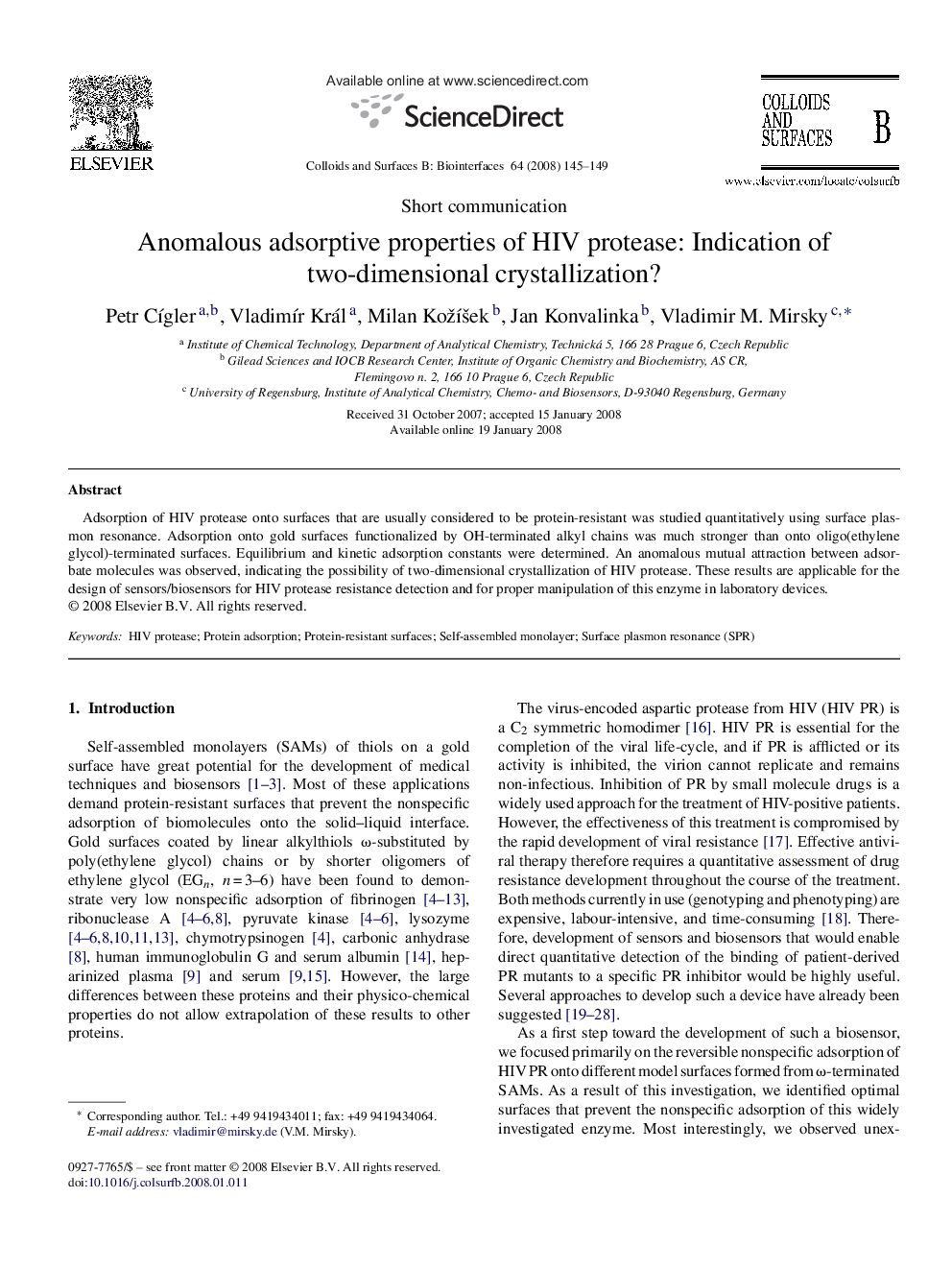| Article ID | Journal | Published Year | Pages | File Type |
|---|---|---|---|---|
| 602195 | Colloids and Surfaces B: Biointerfaces | 2008 | 5 Pages |
Abstract
Adsorption of HIV protease onto surfaces that are usually considered to be protein-resistant was studied quantitatively using surface plasmon resonance. Adsorption onto gold surfaces functionalized by OH-terminated alkyl chains was much stronger than onto oligo(ethylene glycol)-terminated surfaces. Equilibrium and kinetic adsorption constants were determined. An anomalous mutual attraction between adsorbate molecules was observed, indicating the possibility of two-dimensional crystallization of HIV protease. These results are applicable for the design of sensors/biosensors for HIV protease resistance detection and for proper manipulation of this enzyme in laboratory devices.
Related Topics
Physical Sciences and Engineering
Chemical Engineering
Colloid and Surface Chemistry
Authors
Petr CÃgler, VladimÃr Král, Milan KožÃÅ¡ek, Jan Konvalinka, Vladimir M. Mirsky,
